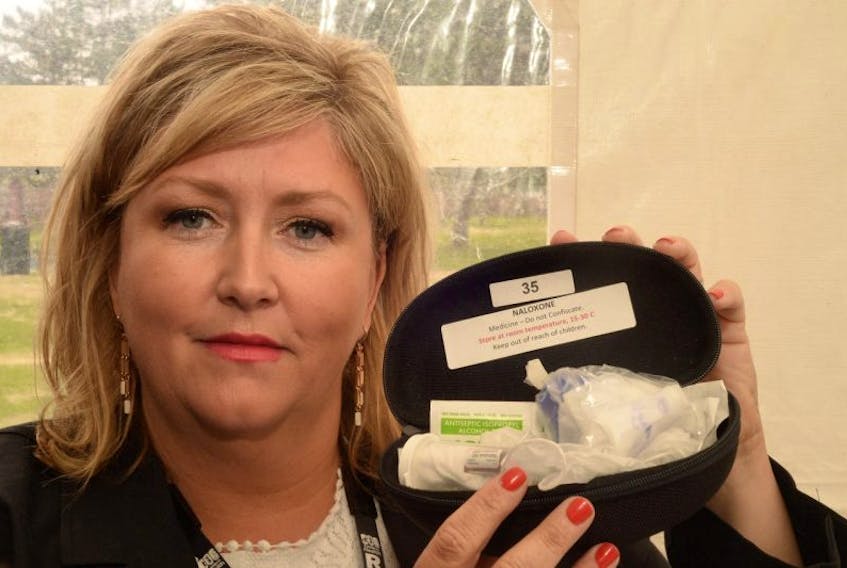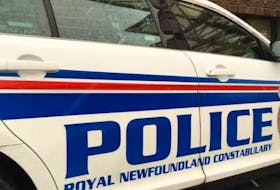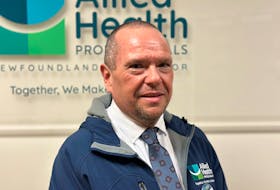On Monday, the provincial government, the City of St. John’s, Eastern Health a number of community outreach organizations launched a first of its kind St. John’s Community Action Group on Fentanyl.
This summer, through an advertising campaign and pop-up tents at various locations and events around the city, the aim is to promote education and awareness about the powerful synthetic opioid, the antidote naloxone, addiction treatment services, and harm and stigma reduction. “At the moment this is kind of an experiment to see how well it works. It’s been tried in other jurisdictions and worked well there,” Health and Community Services minister John Haggie says.
“We though we’d try it out here and see how it worked. The idea is that wherever there is a possibility of fentanyl, these, if they work, should be available there, too.”

One of the key target audiences for the campaign is not necessarily drug users, but those close to them.
“The challenge has been to reach the people who would be best positioned to have (naloxone) and it is those folk who have a loved one at home or a neighbour or someone who they interact with who they think might be using.”
Jane Henderson, Choices for Youth’s manager of research, evaluation and data systems, says the action group is a big step in the right direction in addressing fentanyl, but there continues to be a need to develop a long-term plan to address addictions in the province.
“When we treat a specific drug, we can do everything we can and put all the resources into getting rid of that drug or taking it out of our communities, but I guarantee you if we take fentanyl out of the community we’re going to have another drug quickly replace it,” says Henderson who also spoke to the need of having the justice system play a role.
“Looking at addictions through a punitive lens is not going to get us anywhere and it’s going to prohibit us from doing the work that we need to do.”
She also stressed the need to de-stigmatize addictions so that society can start to view it as a medical issue, not a moral failure.
“When we place blame on people and we really need to question what choice is,” Henderson explains. “When we say someone is a substance user by choice, we need to question where that’s coming from and really try to understand the many, many things that happened before they become someone who uses substances.”
In any plans moving forward, Christopher Smith, the St. John’s site co-ordinator for the Canadian Community Epidemiology Network on Drug Use (CCENDU), feels it’s imperative that the voice of users themselves is heard.
“If you want to develop good drug policies, you talk to people who use drugs and ask them what works,” insists Smith.
Together with Tree Walsh, coordinator of the Safe Works Access Program (SWAP) needle exchange, Smith is working to establish a “lived experience advisory bureau” as part of an investigation into injection drug users needs assessment that’s still in the early stages.
Their hope is the user group will become a permanent thing that can help inform government policy makers and health professionals, while also offering harm reduction education and mutual support to other drug users.
“A lot of these people have been told that they’re useless and they’re garbage and their lives are worth nothing their whole lives,” says Smith. “We have to undo a bit of that and do a bit of skills training and a bit of empowerment work and convince people their lived experience is invaluable.”
Twitter: kennoliver79
Advocate calls for fentanyl test strips, more naloxone
As part of his role with Canadian Community Epidemiology Network on Drug Use, Christopher Smith just attended the recent 25th annual Harm Reduction International Conference in Montreal.
Instead of pens and leaflets, Smith’s take home swag included a handful of fentanyl test strips.
“Knowledge is power, so if people know there’s fentanyl in what it is they’ve just purchased they’re going to be much more careful with it,” he says, noting they cost about one dollar each.
The strips were originally designed to test urine samples, but it was discovered that they could also be used to testing for the presence of fentanyl in other drugs by diluting them in water. It won’t tell the user how much or what type of fentanyl is in play, but it will make the user aware of its presence and hopefully make them think twice.
“If your dope now has fentanyl in it, you’re going to be more careful, assumingly, after 23 people have overdosed, you’re going to think twice about filling up the spoon and having a big smash and putting yourself out.”
Smith also returned with seven doses of Narcan, a form of naloxone taken nasally, and suggests there needs to be more of the antidote made available because two doses is not enough to administer to someone in an overdose situation. In Vancouver, he says, three is the standard amount used.
“Even here there are reports that two vials is not enough naloxone to bring the people back. It takes three and four vials of naloxone to actually revive them.”









